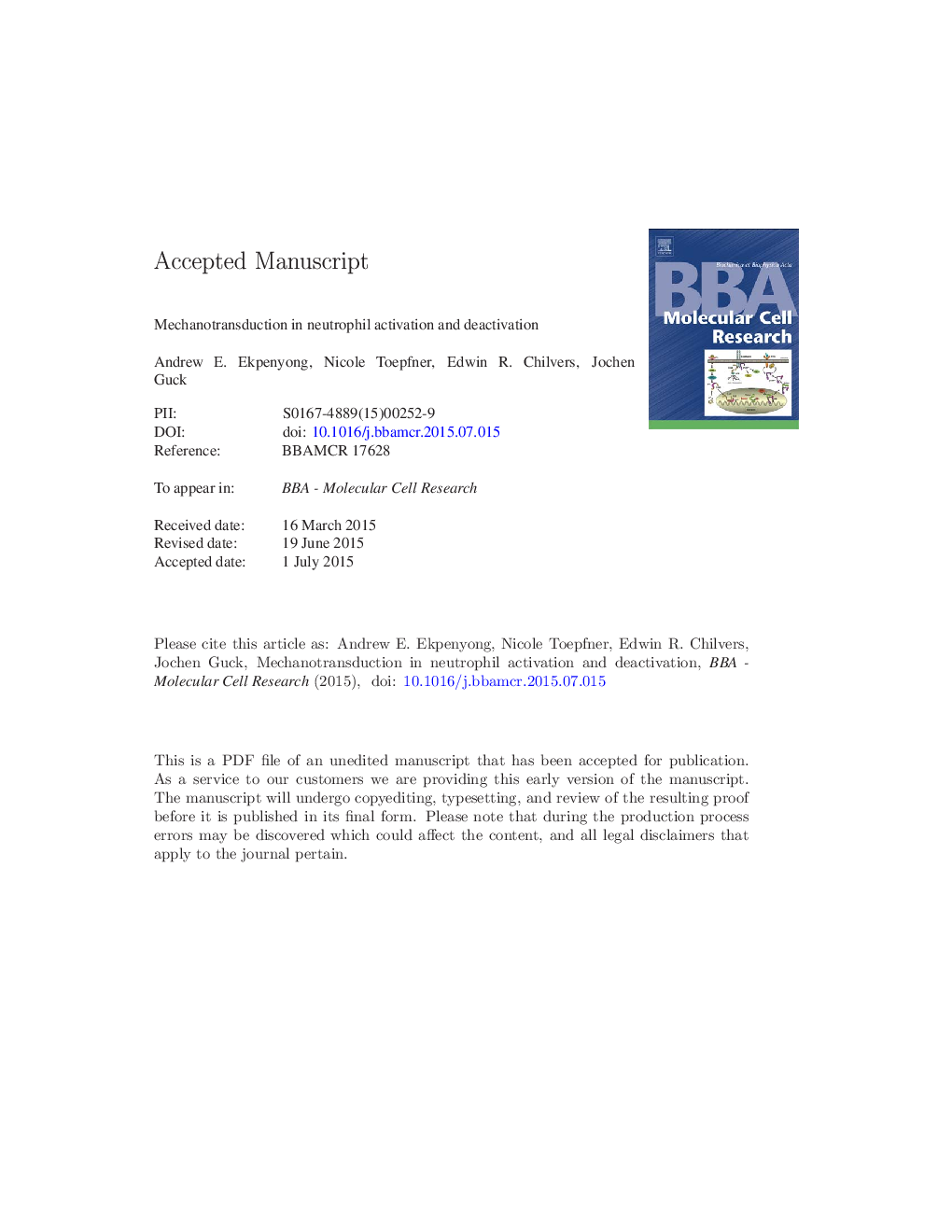| Article ID | Journal | Published Year | Pages | File Type |
|---|---|---|---|---|
| 10801869 | Biochimica et Biophysica Acta (BBA) - Molecular Cell Research | 2015 | 37 Pages |
Abstract
Mechanotransduction refers to the processes through which cells sense mechanical stimuli by converting them to biochemical signals and, thus, eliciting specific cellular responses. Cells sense mechanical stimuli from their 3D environment, including the extracellular matrix, neighboring cells and other mechanical forces. Incidentally, the emerging concept of mechanical homeostasis,long term or chronic regulation of mechanical properties, seems to apply to neutrophils in a peculiar manner, owing to neutrophils' ability to dynamically switch between the activated/primed and deactivated/deprimed states. While neutrophil activation has been known for over a century, its deactivation is a relatively recent discovery. Even more intriguing is the reversibility of neutrophil activation and deactivation. We review and critically evaluate recent findings that suggest physiological roles for neutrophil activation and deactivation and discuss possible mechanisms by which mechanical stimuli can drive the oscillation of neutrophils between the activated and resting states. We highlight several molecules that have been identified in neutrophil mechanotransduction, including cell adhesion and transmembrane receptors, cytoskeletal and ion channel molecules. The physiological and pathophysiological implications of such mechanically induced signal transduction in neutrophils are highlighted as a basis for future work. This article is part of a Special Issue entitled: Mechanobiology.
Keywords
Related Topics
Life Sciences
Biochemistry, Genetics and Molecular Biology
Biochemistry
Authors
Andrew E. Ekpenyong, Nicole Toepfner, Edwin R. Chilvers, Jochen Guck,
